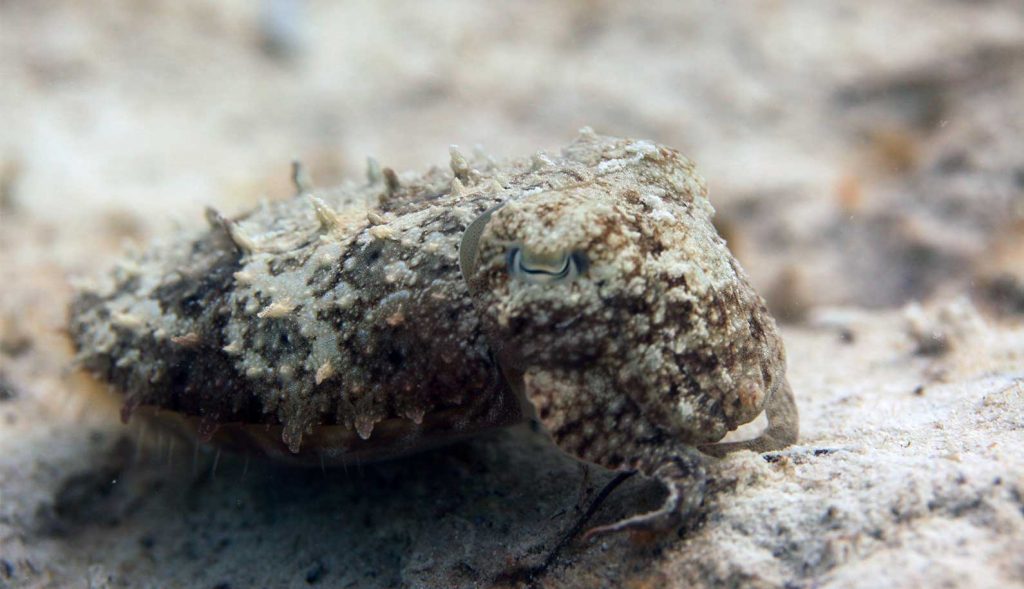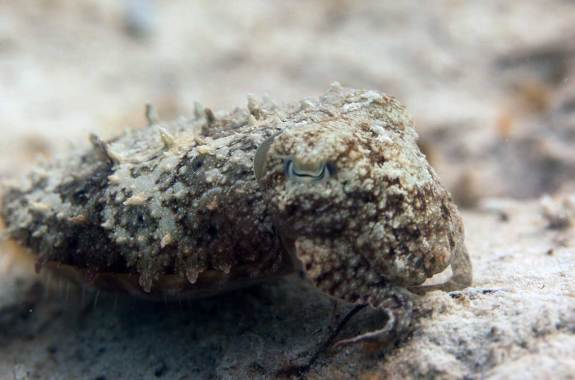Grade Level
6 - 8
minutes
15 min - 1 hr
subject
Engineering and Tech
Activity Type:
animal adaptations, biomimicry, camouflage, engineering design process
Your skin can change texture, and when it does, it’s really not that impressive. You might get goosebumps when you get cold. You might wrinkle your nose at a bad smell or stretch your lips into a smile, or get a scab when you fall and scrape your knee.
But what if you could change the texture and color of your skin to resemble the surface of a bush, a pile of rocks, or even a sand dune? Ridiculous, right? Well, for some cephalopods like cuttlefish and octopus, skin-morphing is as easy as giving a thumbs up.
Here’s one of our favorite videos demonstrating this incredible phenomenon:
Why And How Do Cuttlefish And Octopus Change Their Skin Texture?
Cephalopods are soft-bodied invertebrates living in an ocean of sharp-toothed and large-mouthed visual predators. In other words, they make a great snack for other marine animals. In order to avoid predators, most cephalopods are adapted in one way or another to blend in with their surroundings.
Cephalopods can change the color of their skin using three kinds of specialized skin structures; light-bending iridophores, light-reflecting leucophores, and light-absorbing chromatophores. With these structures, cephalopods can change their color to either match the background, or to generate patterns that break up their silhouette so they’re difficult to find.

But some cuttlefish and octopus go one step further. They change the texture of their skin, making it even more difficult for a predator to see their body in complex environments. To do this, cuttlefish and octopus use papillae, muscly balloon-like skin structures that can expand into various shapes and sizes.
Here’s a close-up of a papilla in action:
“Something that’s really unique about these animals that no other animal group has is the malleable 3-D texture of the skin. That 3-D texture is an extra attribute in camouflage that is very important for visual deception.” – Roger Hanlon, ethologist and cephalopod camouflage expert.
You can model a single papilla using just a balloon and duct tape. If you’re feeling fancy, you can even engineer your model papilla to take on a particular shape. So grab some large (12-inch) balloons, a roll of duct tape, and let’s get to know papillae up close!
Educators, this Biomimicry Student Worksheet may help students through the process of engineering their own papillae.
Make A Model Papilla
1. Blow up your balloon. Then let the air out so that it’s less than half-filled with air. Pinch it closed, but don’t tie it off just yet. This is your model papilla! Each papilla is an adjustable projection that can grow or shrink and change shape.
2. Use your hands and squeeze one side of your “papilla” to make another part inflate. This is similar to how muscles control the amount that papillae are extended. When a cuttlefish or octopus wants to expand their papillae, tiny muscles around each papilla contract, pushing tissue and fluid up into the balloon-like sac, causing it to swell.
3. Next, tear a bunch of thin strips of duct tape. With your balloon about 25 percent inflated, apply strips to your balloon in random patterns, pressing each down firmly. Get creative, but don’t try to remove duct tape that you’ve already applied or it will tear your balloon.
The duct tape strips represent tissues that run around and across each papillae, generating variable papilla shapes by restricting and permitting stretching in different places.
4. Slowly blow air into your balloon, and watch as your model papilla changes shape as it inflates. How did the application of strips of duct tape alter the final shape of your papilla from its original shape? How did its shape change as it was inflated?
5. Try making different papillae by strategically applying tape to create the shapes taken by real cuttlefish papillae. You can also experiment with latex gloves or the long balloons used to make balloon animals. Can you figure out how to replicate the ability of papillae to get larger or smaller? Can you mimic their asymmetric and jagged shapes? What are the inaccuracies of the papilla model you’ve just created?
Check Out This Artificial Cephalopod Skin
Humans are often influenced by biological structures and processes while engineering new technologies and inventions. This approach to engineering is called biomimicry.
Inspired by the way that cephalopod papillae work, a team of engineers and biologists worked together to make an artificial skin that could one day be used to give anything (including humans or robots) the same incredible power of on-demand skin texture. Here’s what it looks like:
Can you think of any ways that this texture-changing cephalopod skin-like material could be used to solve a human problem or create benefits for humans? Who would benefit?
For a bit of inspiration, take a listen to this discussion on cephalopod biomimicry, the ways that cephalopods have inspired scientists and engineers to mimic their unique adaptations for human benefit. You can print an article version of the discussion here.
Editing by Daniel Peterschmidt
Educator's Toolbox
Meet the Writer
About Ariel Zych
@arieloquentAriel Zych is Science Friday’s director of audience. She is a former teacher and scientist who spends her free time making food, watching arthropods, and being outside.
